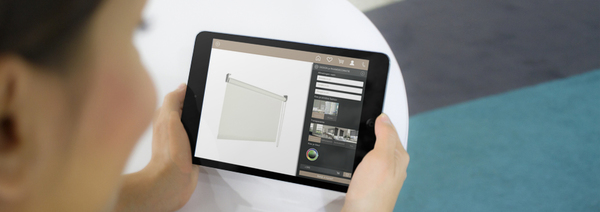Presenting customers with too many choices can have a paralyzing effect, resulting in the absence of a buying decision. When presenting your clients with different alternatives in the right way, you can avoid this buyer fatigue or choice overload.
A product configurator is an excellent tool to help you do this.
Too many options: the Paradox of Choice
Choice. We all know it’s what our clients want. Whether they’re deciding on which car to purchase or which furniture piece should center their living room, consumers want options.
Maximizing choice options leads to a higher consumer welfare, right?
The greater the number of choices, the greater the likelihood that any given consumer will find the product of their dreams in the collection that is presented to them.
These days, brands offer those options. Even when buying toothpaste we have to consider all sorts of variants. The supermarket I frequent has 41 different toothpastes, and I have to pick just one. After that, there’s a whole list of other choices for me to make: what type and brand of cookies, washing detergent, olive oil, … Even buying water involves a choice!
However, giving people too many choices can have negative effects. Barry Schwartz names two in The Paradox of Choice:
- With too many options to choose from, people find it very hard to choose at all. It creates a state of paralysis. We postpone the decision making to the next day, and the day after that and so on.
- Even if we manage to overcome this paralysis and we actually do make a choice, we end up less satisfied by the end result of the choice than if we have had lesser options. When there are a lot of alternatives to consider, it’s easy to imagine having made the wrong choice or having made another decision that would have been better.
This phenomenon is often referred to as “buyer fatigue” or “decision overload”. As people are overwhelmed by the choices they daily face, they lose the ability to decide and resist making further decisions.
We don’t have to point out that this is a thing to avoid when you’re in the business of selling products. When customers are reluctant to decide, they might not buy anything.
So how can we help our clients fight buyer’s fatigue? Is there a line between too many options and not enough?
Choice Architecture
The way we present our clients with choices has an impact on the decision-making process they go through.
“Choice architecture” is the design of this presentation; the number of choices you give your clients, the manner in which you describe options, starting with a preset or “default” choice… they all influence the choices made by customers.
If the design is right, we don’t necessarily have to limit choice (and consumer welfare). It is possible to reduce the cognitive effort required to evaluate options by shaping the context in which decisions are made. By doing so, you can avoid buyer’s fatigue.
There are a lot of steps to take into account in choice architecture. We will mention three as discussed by Sheena Iyengar in her TED talk “How to make choosing easier”: categories, complexity and concretization.
1. Categorization
By categorizing choices, we help consumers handle the number of decisions they have to make. This is because we can handle more categories than we can handle choices.
In an experiment, a group of people was presented with
- – 600 magazines divided up in 10 categories
- – 400 magazines organized in 20 categories
Overall, people found they had more choice and a better choosing experience when they were given the 400 magazines in stead of the 600 magazines.
Having more categories to choose from helps you to tell options apart.
2. Complexity
Consumers can handle more information than we think. We just have to make it easier and gradually increase complexity.
The order in which we present alternatives to our clients determines the engagement and fun they have making decisions.
With custom products, consumers can design the product of their dreams. Let’s take the example of a sofa. Consumers can choose form (1 seat, 2 seat, 3 seat…), fabric or leather, colour (450 options in fabric, 53 in leather), type of leg (20 alternatives) and so on.
By ordering these choices from easy (low amount of options) to more complex, we keep customers engaged and even excited about the product they are putting together.
If we give consumers the same amount of information but turn the order around (complex choices first) we loose them along the way and engagement drops dramatically.
So it’s important to gradually increase complexity.
3. Concretization
People have to understand the differences between choices. We can do this by visualizing alternatives and make consumers see the differences between options.
A picture speaks a thousand words. It’s important to provide your clients with visual information.
This can be a challenge for custom product manufacturers. With a lot of options comes a lot of possible product designs.
Let’s say a custom product consists of 3 components (or categories) and each component has 12 options. This means 1.728 different products could be assembled! Is it possible to visualize all of them in a simple way?
Yes, it is! The answer is a tool called product configurator.
How a product configurator helps clients make choices
A product configurator is a marketing and sales tool that can be used to lead your clients through the decision-making process whilst showing them a model of the product they are putting together.
There are lots of examples out there; car configurators, shoe configurators, pool configurators, furniture configurators, blinds & curtains configurators… You name it!
A product configurator allows you to put the three steps we’ve discussed above into practice:
- categorize by offering product options in different categories in the sidebar menu;
- let consumers make choices in order of complexity (from easy to more difficult);
- concretize by showing a model of their design with each option they adapt.
It is even possible to let clients try before they buy by using new technologies such as augmented reality! Your customer isn’t sure those curtains match the wall colour? Let him “project” them on their home windows!
The video below shows an example of a cupboard configuration and projection.
It doesn’t become more concrete than this!
Want to learn more about product configuration?
You stumbled to the right place!
We have a whole page filled with information, tips and tricks. Click the yellow button and keep exploring!




